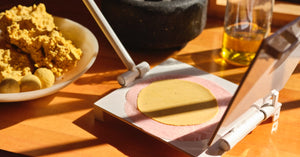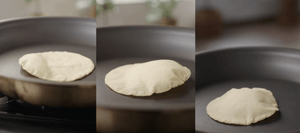The humble bean has experienced something of a renaissance in the past two years, when consumers cleared pantry staples from supermarket shelves with apocalyptic fury.
A pot of freshly cooked beans is insurance against fits of hunger, an inspirational jumping-off point for a myriad of recipes, or a meal in and of itself. Combining the little legume with water and salt to make something greater than the sum of its parts is a comforting act of self care and a sure bet in the face of anxious uncertainty. Try it when you feel adrift: both the cooking and the consuming have a grounding effect. Something about the humble staple can feel almost luxurious; for the home cook, buying a fancy variety of beans is good for the soul, like treating yourself to fresh flowers or an expertly made espresso.
Our offering of Heirloom Beans is a natural extension of our efforts to source Heirloom Corn from Mexico. Many of the corn farmers who we work with also grow beans, either in a "three sisters" style of milpa farming or as a rotational crop that helps replenish the nutrients in the soil that corn and other crops can deplete. They're kind of an agricultural yin and yang. They're also a yin and yang on your plate! What masa-centric meal is not made better by a tender bowl of frijoles? We are proud to wear the jersey of Team Bean. Read on for a primer on heirloom beans and our best tips for preparing them.







All Comments
What a great article! When I saw the three sisters grown together outside the National Museum of the American Indian, around 2010 or so, I felt such a sense of harmony that I visited many times. It’s good that Masienda is explaining these healthful things, accompanied by recipes and kitchen tools that make it easy for anyone to start cooking.
Es muy importante los frijoles en la alimentación en el mundo.